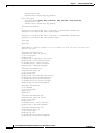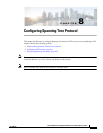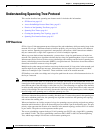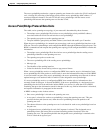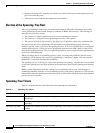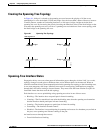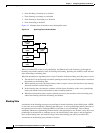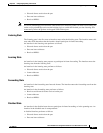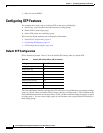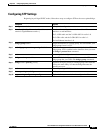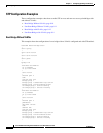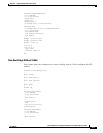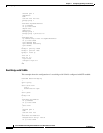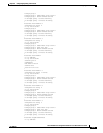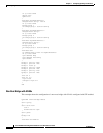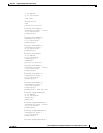
8-8
Cisco IOS Software Configuration Guide for Cisco Aironet Access Points
OL-30644-01
Chapter 8 Configuring Spanning Tree Protocol
Configuring STP Features
• Does not receive BPDUs
Configuring STP Features
You complete three major steps to configure STP on the access point/bridge:
1. If necessary, assign interfaces and sub-interfaces to bridge groups
2. Enable STP for each bridge group
3. Set the STP priority for each bridge group
These sections include spanning-tree configuration information:
• Default STP Configuration, page 8-8
• Configuring STP Settings, page 8-9
• STP Configuration Examples, page 8-10
Default STP Configuration
STP is disabled by default. Table 8-2 lists the default STP settings when you enable STP.
The radio and Ethernet interfaces and the native VLAN on the access point/bridge are assigned to bridge
group 1 by default. When you enable STP and assign a priority on bridge group 1, STP is enabled on the
radio and Ethernet interfaces and on the primary VLAN, and those interfaces adopt the priority assigned
to bridge group 1. You can create bridge groups for sub-interfaces and assign different STP settings to
those bridge groups.
Table 8-2 Default STP Values When STP is Enabled
Setting Default Value
Bridge priority 32768
Bridge max age 20
Bridge hello time 2
Bridge forward delay 15
Ethernet port path cost 19
Ethernet port priority 128
Radio port path cost 33
Radio port priority 128



